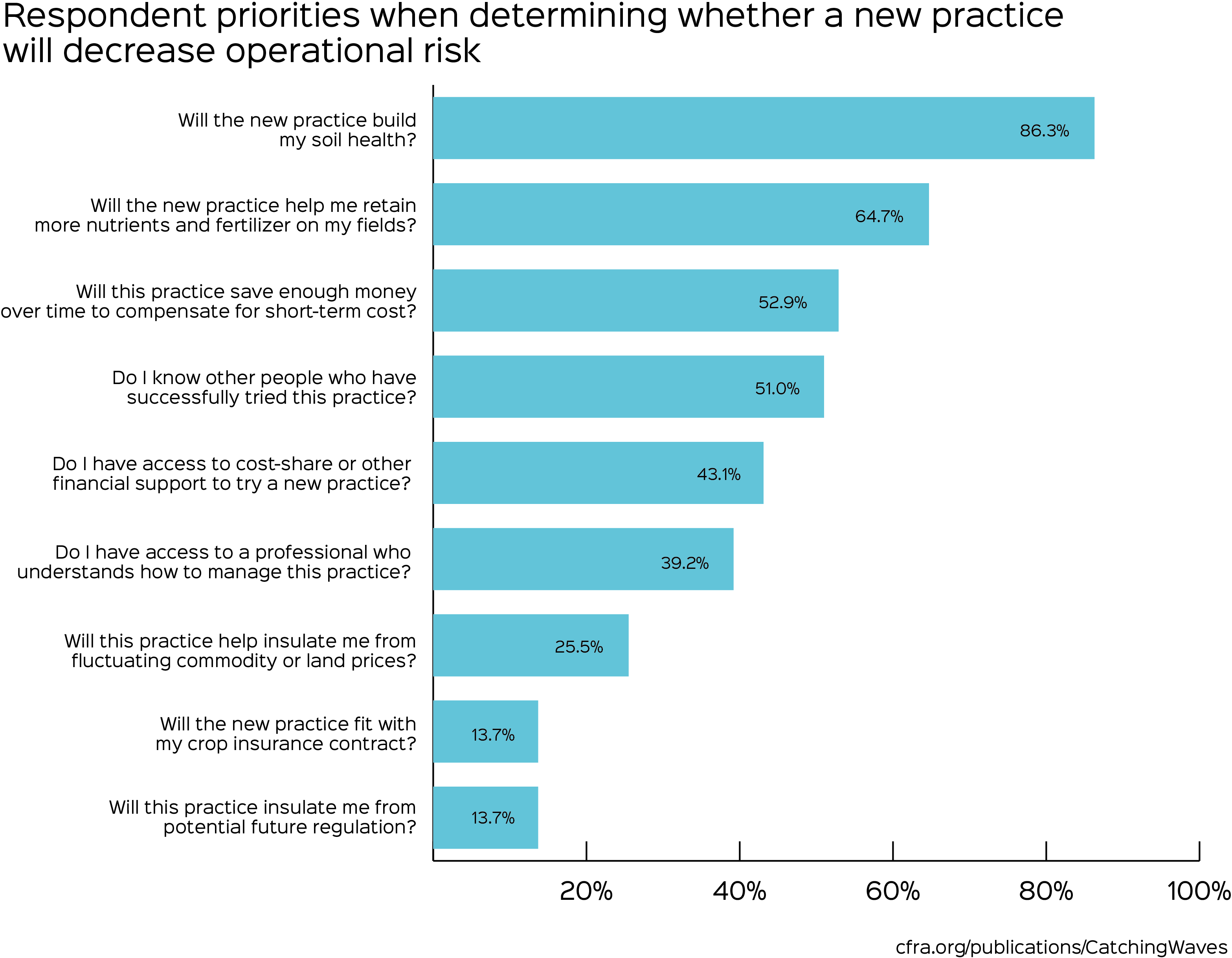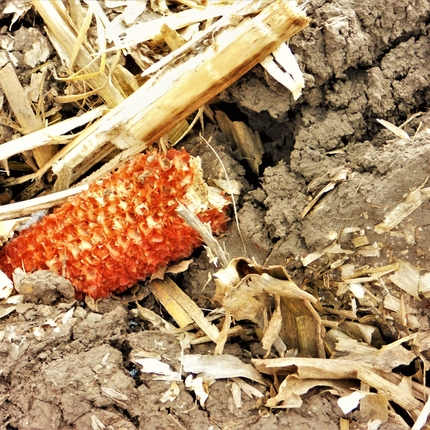By Cody Smith, former staff member
Across the nation, farmers, ranchers, rural communities, and state leaders are finding that a key component to building a brighter future for rural America lies beneath our feet. By investing in soil health, states are creating more resilient food systems in the face of increasingly frequent extreme weather, reducing pollution and runoff in rivers and streams, and providing a long-term anchor for many rural economies. To put it simply, states that make investments in building soil health are helping to create a more vibrant future for rural America.
The term “soil health” has burst into our national dialogue over the last decade as many begin to view soil as a living, breathing part of our ecosystem. Soil health, as defined by the U.S. Department of Agriculture’s Natural Resources Conservation Service (USDA-NRCS), includes six indicators:
- Organic matter recycling and carbon sequestration,
- Soil structure stability,
- General microbial activity,
- Carbon food source,
- Bioavailable nitrogen, and
- Microbial community diversity.
In generic terms, good soil health is defined by its ability to absorb water, retain nutrients like nitrogen and phosphorus, and sequester carbon. Other measurements can include amounts of organic matter, depth of topsoil, and yield productivity.
Nationwide, many states have differing definitions of soil health. However, California, Hawaii, Maryland, Massachusetts, New York, Oklahoma, Utah, and Vermont, have all adopted common language defining soil health. Other states, including Connecticut and New Mexico, are also considering the adoption of this language. A common definition for soil health is an important first step states can take to implement policy that supports soil health.
Practices that support soil health can vary greatly by region and, more locally, by farm. In the Midwest, a practice that has grown exponentially over the last several years is the planting of cover crops. As a basic concept, cover crops are used to keep living, growing roots in the soil during periods of the year where there are no cash crops growing, such as corn or soybeans. Cover crops hold nutrients in place in the soil and can also be used grazed by livestock during winter months—reducing the need for feed purchases for farmers and ranchers.
Other practices that build soil health include improving crop rotations, intercropping, and land retirement through programs like the Conservation Reserve Program.
In states like Iowa, many initiatives and programs promote soil health as a way to adopt more sustainable farming practices. This approach is well-informed given that, in a 2017 Center for Rural Affairs survey, nearly 87 percent of farmer respondents identified soil health as a consideration for implementing practices that reduce their overall risk. See graph below. Promoting soil health can help states like Iowa improve water quality, a serious challenge in the state.
In the same survey, a clear majority of farmers identified extreme weather events as the biggest risk to their operation. Good soil health can help build more resilient agricultural systems through increased resiliency during extreme weather events. Healthy soils absorb more water, acting like a sponge to hold more water when precipitation is high or low—reducing runoff during heavy rains and retaining water for crops during periods of drought.
Across Nebraska, precipitation varies greatly, as does the type of soil farmers grow their crops in. However, one thing remains constant—healthier soils lead to cost savings for farmers and ranchers through increased weather resiliency and reductions in erosion and farm runoff. By having higher microbial activity and elevated rates of water infiltration, farmers enjoy the benefits of soil that reduce the need for additional inputs of nutrients like nitrogen. Meanwhile, ranchers with healthy soils see benefits in better grazing land and less soil compaction from livestock.
In Nebraska’s state legislature, lawmakers are considering Legislature Bill 243, which would create a Healthy Soils Task Force. The Healthy Soils Task Force is a proactive effort that seeks to work with farmers, researchers, and conservation specialists to identify opportunities to improve land productivity and profitability, while also considering long-term agricultural viability.
The same discussion is occurring in Iowa’s state legislature. Lawmakers are considering proposals to provide tax exemptions for farmers who plant cover crops for livestock grazing, while advocates seek the formation of a soil health study committee. As farmers in both states, and across the region, face declining farm incomes—13 percent in 2018 alone—more investments in soil health may provide opportunities to reduce input costs and boost long-term productivity.
When farmers see higher returns on investments and long-term gains in productivity and yield, rural economies do better. Although farming and ranching as a share of the rural economy are shrinking, jobs in manufacturing, service, and other industries are closely tied to productivity of agricultural producers. Farmers and ranchers raise products used in everything from milk to car seats.
Resiliency, stewardship, and economic prosperity resulting from healthier soils are key to growing a strong, deep-rooted future for our rural communities. As soil health becomes a larger priority, states who invest in it are investing in a more vibrant future for rural America.






